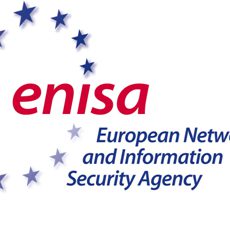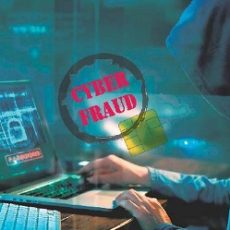很多年前,有人问我做什么工作的,我回答“安全”。十有八九对方会说:“哦,HSE啊。”
我说不是HSE,是SECURITY,安全保卫的安全。
后来再有人问我做什么工作的,我就回答“安保”。结果对方基本都会问:“哦,你哪个保安公司的?”
我说我不是保安公司的,我不直接管理保安员,而是外企里面专门负责security工作的。
再后来,我的工作内容中crisis management占了很大一块,我有时候会在自我介绍时说“我做危机管理的”。
最常碰到的反应是——“哦,危机公关啊,搞媒体的。” 我又得解释说我不是搞危机公关的,是负责协调外企的危机管理。早些年,还有人会说”哦,微机,搞电脑的啊。“ 我就得甩一甩头,引导对方的目光到我那乌黑浓密的头发上反问“你看我像搞IT的吗?”(No offense to IT pros., just kidding lah.)
这件事好像总也说不清楚,怎么说都有人误解。抛开人们对security vs safety的普遍混淆和误解先不说,今天跟你分享十个这些年我遭遇过的对crisis management最常见的误解,或曰迷思。
以下内容我经常在企业内部危机管理培训中使用。一家之言,欢迎讨论。
Top 10 Misconceptions and Myths About Crisis Management
关于危机管理的十大误解与迷思
1. Most crises are caused by external factors.
迷思一:大多数危机都是外部因素引起的
Truth is 80% of crises have internal causes.
真相是至少八十个八仙的企业危机是由内部因素引起的。
2. Most crises are unpredictable and strike suddenly.
迷思二:大多数危机都不可预测,并且突然发生。
Truth is 60% of company crises are “smouldering” as opposed to “sudden” ones.
真相是六成的公司危机是“酝酿型”,而不是“突发型”事件。
*危机事件可以笼统地分为“突发“(sudden)和 “酝酿”(smouldering)两种类型。
3. Crisis management is all about protecting your company’s public image and managing public relations.
迷思三:危机管理就是维护你公司的公众形象和管理公共关系(PR)。
Truth is the real purpose of crisis management is to solve the problem itself, while PR is to tell the media you have no problem, or everything is under your control.
真相是危机管理的真正目的是解决问题本身,而公共关系(PR)的目的是告诉媒体你公司没有什么问题,或者一切问题都可防可控,尽在你公司的掌握之中。
4. A crisis has only negative impact on your business.
迷思四:危机对公司业务只会造成负面影响。
Truth is a crisis, if managed well and even smartly, can be positive, and even create a rare opportunity for your business.
真相是危机如果处理得好,并且处理得巧妙的话,也可能给你公司带来意想不到的发展机遇。
5. Crises happen to those big companies.
迷思五:危机只会发生在那些大公司。
Truth is crises respect no borders, scales, sizes, regardless of who you are. They can happen at any time to anyone as they wish to.
真相是危机不分国界、规模、大小,不论你是谁。危机随时可能发生在任何公司。
6. You can’t plan for a crisis since it is unpredictable.
迷思六:因为危机不可预测,所以你也没办法做准备或计划。
Truth is yes, you can, and you should – a well trained crisis management team (CMT) with a sound crisis management plan (CMP) can mitigate the ramifications of crises to your business.
真相是你可以做准备,更应该做计划。一个训练有素的危机管理团队加一套合理的危机管理计划能把危机事件对你业务的负面影响降至最低。
7. You shouldn’t trust anyone in a crisis.
迷思七:危机发生时,谁也不能信任。
Truth is you should trust your crisis management team (CMT), your special task force, or the “Go-To” team you sent to the scene. But yes, you should watch out for the media (including social media).
真相是危机中,你应该充分信任你的危机管理小组、特别行动队或派往一线的“处置小组“。但需要密切留意媒体(包括个人的社交媒体)动向。
8. You shouldn’t let your employees know too much about a crisis.
迷思八:你不应该让你的员工了解太多关于危机的信息。
Truth is you should provide your employees with adequate information to avoid rumors.
“No Comment” is always a poor comment. If you give “no comment” to the media. The media will find the comment they want from elsewhere. If you give “no comment” to your employees. Your employees will make comments you don’t want to hear.
Remember this: never lie; never hide or twist information, in a crisis. All crises will pass, but if you have lied, the lies will stay in history.
真相是你应该给员工提供充足的信息以避免谣言四起。
“无可奉告“这句话在任何时候都不建议说。如果你跟媒体说”无可奉告“,媒体总会有办法找到人”奉告“。如果你跟员工说”无可奉告“,员工就会七嘴八舌聊出你不想听到的故事。
谨记:危机中,永远不要扯谎,不要隐藏或扭曲信息。所有危机都会过去,但如果你编了瞎话,瞎话恒久远,一句永留存。
9. A crisis manual is all I need.
迷思九:我有危机管理手册就够了。
Truth is a manual is only a plan, a document. You need training, exercises, and drills too.
Remember this – keep your crisis manual short, concise, and simple. If you can, try to condense the key messages into a one-pager.
真相是危机管理手册只是一份计划、一个文件。你还需要危机培训、情景推演和实战演练。
谨记:危机管理手册尽量简短、简练、简单。如果可以的,可以试着把危机管理的关键要点信息浓缩到一页纸上。
10. I have done a crisis training before. No need to do it again.
迷思十:我以前接受过危机培训,不需要重复培训了。
Truth is you need crisis training and refresher training and refresher training again and again until a crisis hits. Then what? Learn the lessons and continue your crisis training.
真相是你需要不断复习、重现、重复的危机培训,直到危机事件发生。然后呢?然后总结经验教训,继续进行危机培训。






